This information is for Queensland businesses. Electricity bills and tariffs will vary state to state, so please keep this in mind when completing your research.
This blog forms part one of our Queensland Bill Hunter series, where we are on the lookout for the worst electricity bill in QLD. Think you might have the worst bill? Submit it to us here and we will review it, provide an analysis, and offer recommendations for improvement.
In this series, we are exploring five different bill types and tariffs:
Five Part Series
1. Flat rates and off-peak charges
2. Flat rates with demand charges
3. Commercial demand electricity bills
4. Electricity bills when you have a solar system
5. Electricity bills when you have a solar system and a battery
This blog offers an in-depth guide on how to read and understand commercial electricity bills with complex demand charges.
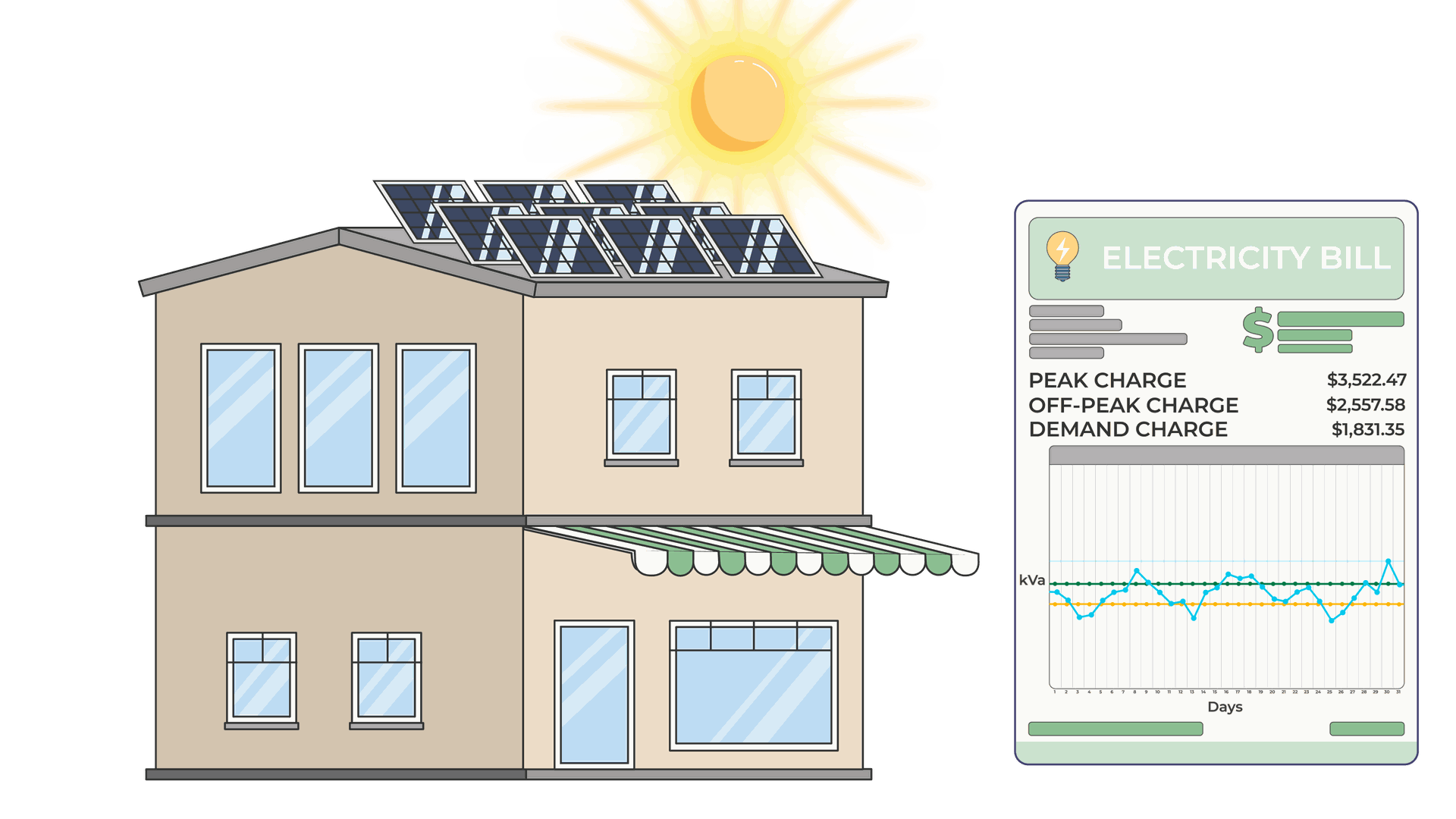
If you run a business, chances are you've seen the electricity bill and thought something along the lines of either "Wow, that's a lot of charges", or, "This looks complicated". And yep, you're right, there are a lot of charges and it is complicated, especially when compared to residential electricity bills.
We will share a real-life example of one of our customer's commercial electricity bills to demonstrate what kind of charges you could have, how to read it, and how you can save money to improve your bottom line. This customer was interested in installing solar to save on utility costs and redirect funds back to what mattered to them - as we go through, you will see exactly why this customer did end up opting for a solar energy system on their premises.
But first, there are three main charge "umbrellas" you will find on commercial bills - let's explain what each is.
- Peak
- Off-Peak
- Demand
Read more: Queensland electricity prices to increase by up to 22%
What is a peak charge?
The peak charge on your commercial electricity bill covers all daytime usage from Monday to Friday. For a lot of businesses, this is likely when you'll be using the most energy, and this is when you could offset the most amount of kWh with solar.
The total peak charge is the sum of the peak rate plus all other kWh charges on the electricity bill. We will explain this further down.
What is an off-peak charge?
The off-peak charge on a commercial electricity bill covers all other usage, including overnight and weekend usage. If your business only operates on weekends or at night time, this would mean you are being charged less for your kWh than your daytime counterparts, because you are using off-peak electricity.
Similar to the total peak charge above, the total off-peak charge is the sum of the off-peak rate plus all other kWh charges on the bill. Keep reading to see our example of this.
What is the demand charge?
The demand charge on your commercial electricity bill is where the retailer is charging you for the highest usage for the month. This highest usage charge is the instantaneous highest electricity use at any time of the month. That highest instantaneous usage will then be charged to you over a 30-day period.
In the example bill below, the business's usage peaked on the 17th January at 1pm when their electricity usage recorded 165.77kVa. This is considered their highest metered demand, and that usage will be multiplied by their demand charges across a 30 day period.

Example electricity bill
Commercial Bill with Demand
This is a real bill from one of our Queensland customers who was hoping to determine whether a solar energy system would be worthwhile installing on their high-rise in Brisbane City. Let's analyse this bill together to find out.
You're probably aware that electricity bills all look slightly different depending on the retailer, but all bills are broken down into sections. Commercial bills for businesses that use over 100mWh of electricity per year will have electricity bills that are very complex and have multiple sections. Let's take a look at an example of this now.
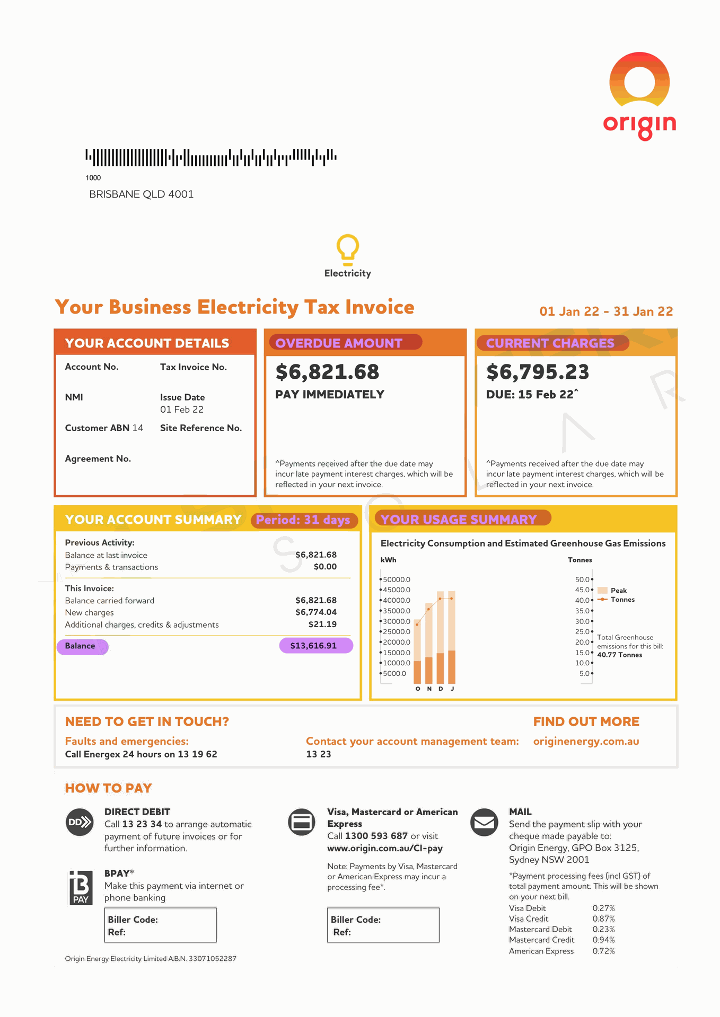
Page 1
Page one of this bill displays the billing period, an energy usage summary, and a total balance due. We can see this is a monthly bill and we can compare how their energy usage this month compares to the other billing periods in the year so far.
The balance due of $13,616.91 is a figure we aren't going to pay much attention to - it's broken down into past payments, current payments, and all of the individual peak, off-peak, and demand charges we will see soon.
Basically, there are many factors contributing to this total amount due, and we want to find out what. So, let's ignore the total amount due, and continue.
Read more: Five reasons why installing commercial solar will benefit your business
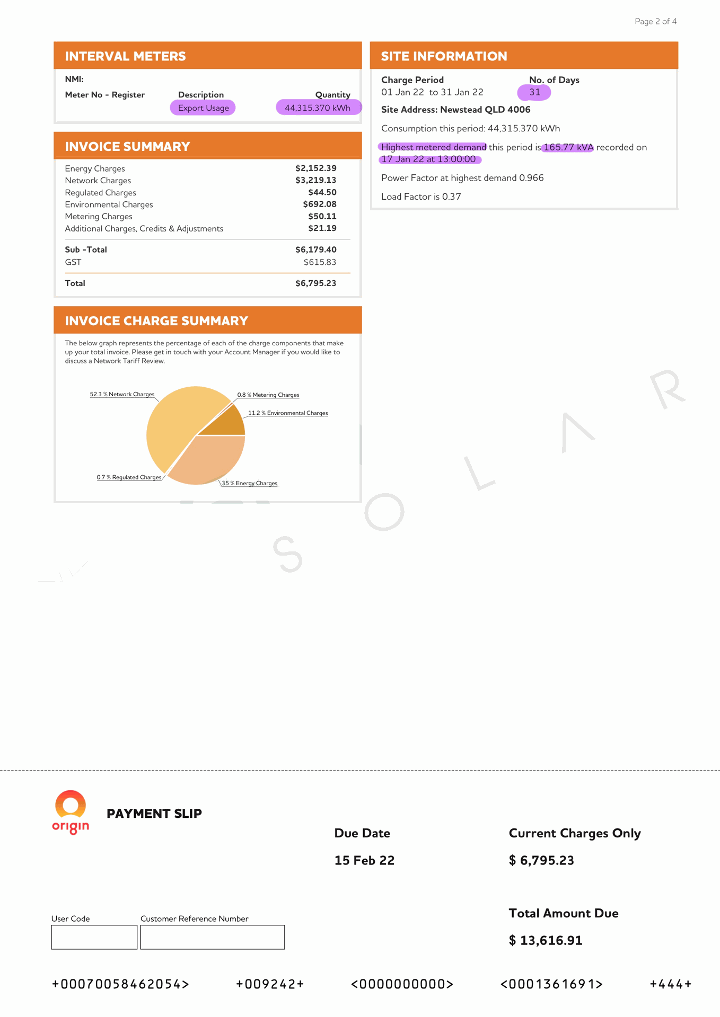
Page 2
On page two, we can see the export usage (the energy used by this customer) of 44,315kWh over a 31-day period. That equates to about 1,429kWh per day - this daily usage allows us to determine whether they are viable for a solar system and the size of the solar system they require. Already, we can tell this business is a large energy consumer and solar could offset a large portion of that usage.
We can also see the highest metered demand for this period here. For this business, this peaked at 165.77kVa, which was recorded on the 17th January at 1pm. This was their highest instantaneous draw of electricity for the entire month.
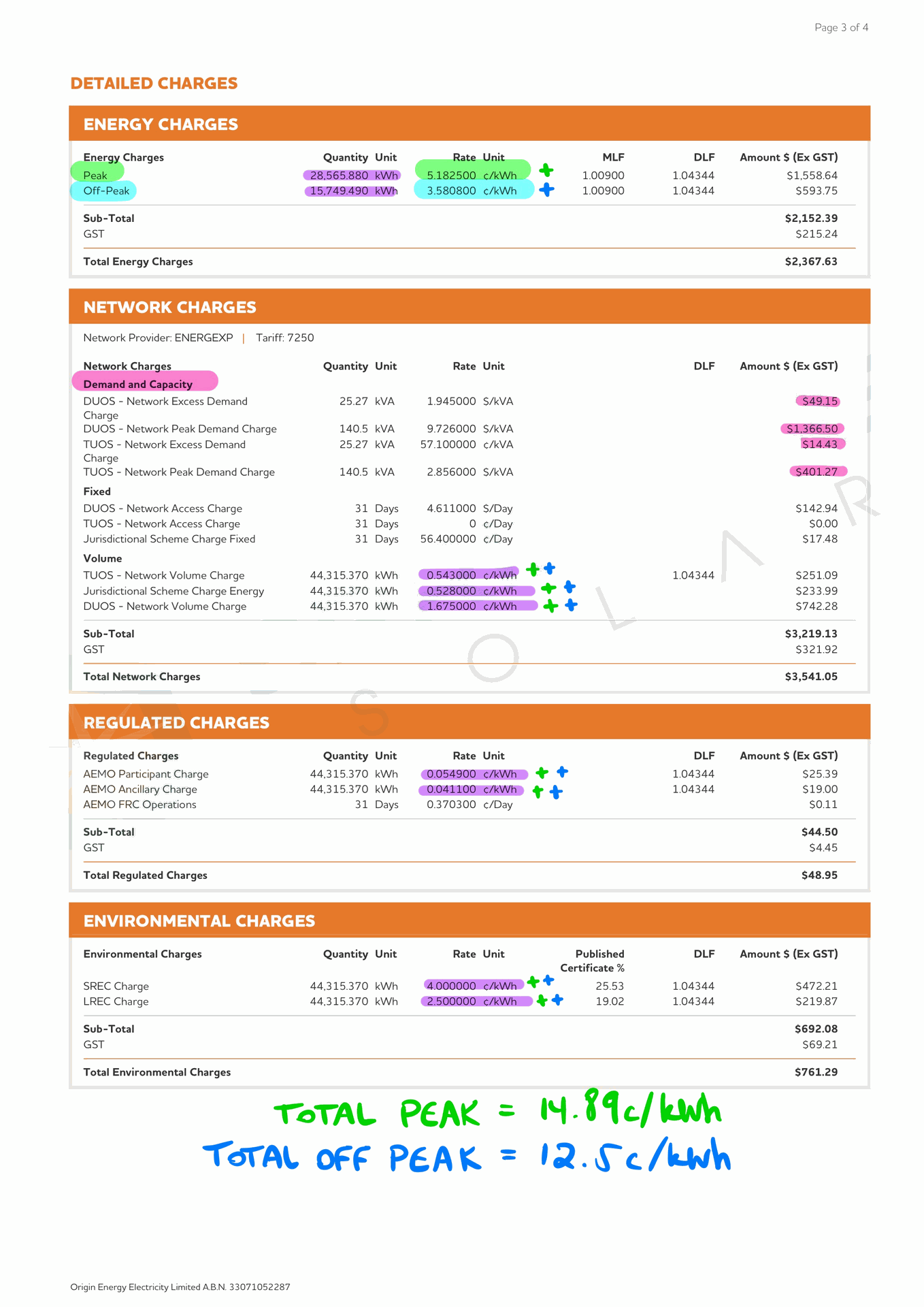
Page 3
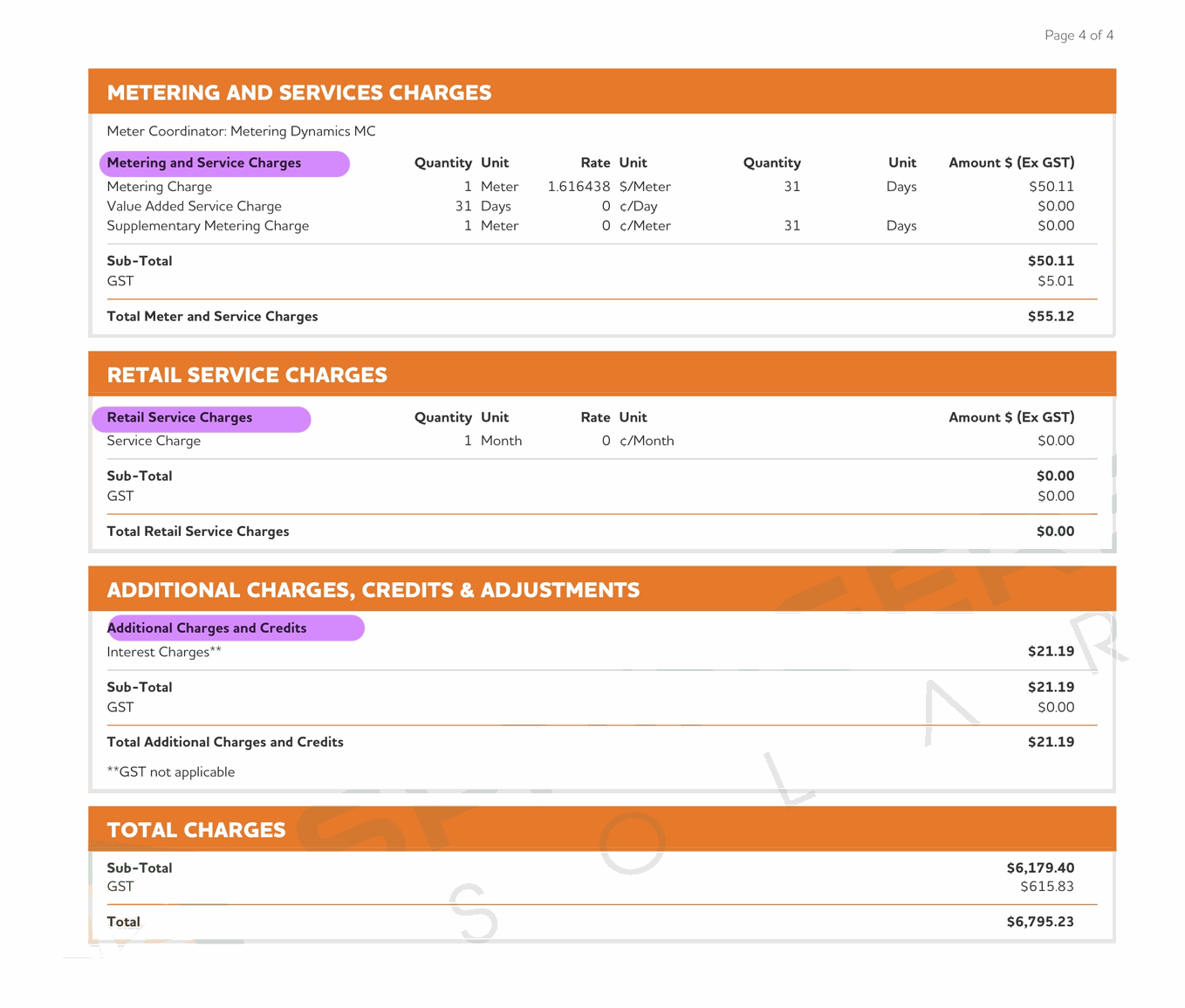
Page 4
Pages three and four are where we can see the breakdown of all the charges. As you can see, there are a few different sections:
- Energy charges (includes peak and off-peak rates)
- Network charges (where we can find the demand charges)
- Regulated charges
- Environmental charges
- Metering and service charges
- Retail service charges
- Additional charges, credits, and adjustments
All of these combined will result in the total charge for this bill.
You should notice right away that up the top, in the Energy Charges section, you can find the peak and off-peak rates. Easy to identify the tariff for each, right? Well, those rates aren't showing you the full picture, and you actually need to add all of the other kWh charges in all the other sections of the bill to find your total peak rate and total off-peak rate.
We have colour-coded page three so you can see what we mean: the peak rate, highlighted in green, needs to be added with all other kWh charges (highlighted in purple) in all the other sections of the bill. When we do this, we actually end up with a total peak rate of 14.89 cents per kWh.
That means this business is being charged 14.89 cents/kWh Monday to Friday. This particular business only operates during business hours, 5 days a week, so this total peak charge is making up the majority of their electricity bill. Looking at this, we know immediately that a solar system would be hugely beneficial for this property.
The off-peak charge works the exact same way - the base rate for off-peak is 3.58 cents/kWh, but when added with all other kWh charges on the bill, we result in a total off-peak charge of 12.5 cents/kWh.
The demand charges can be found highlighted in pink within the Network Charges section.
The charges on page four are fixed standing charges set by the retailer. Your electricity usage won't affect these charges, and if this customer isn't happy with the rates set here, we would recommend shopping around for another retailer or asking for a better plan.
Read more: Pros and cons of solar energy in 2024
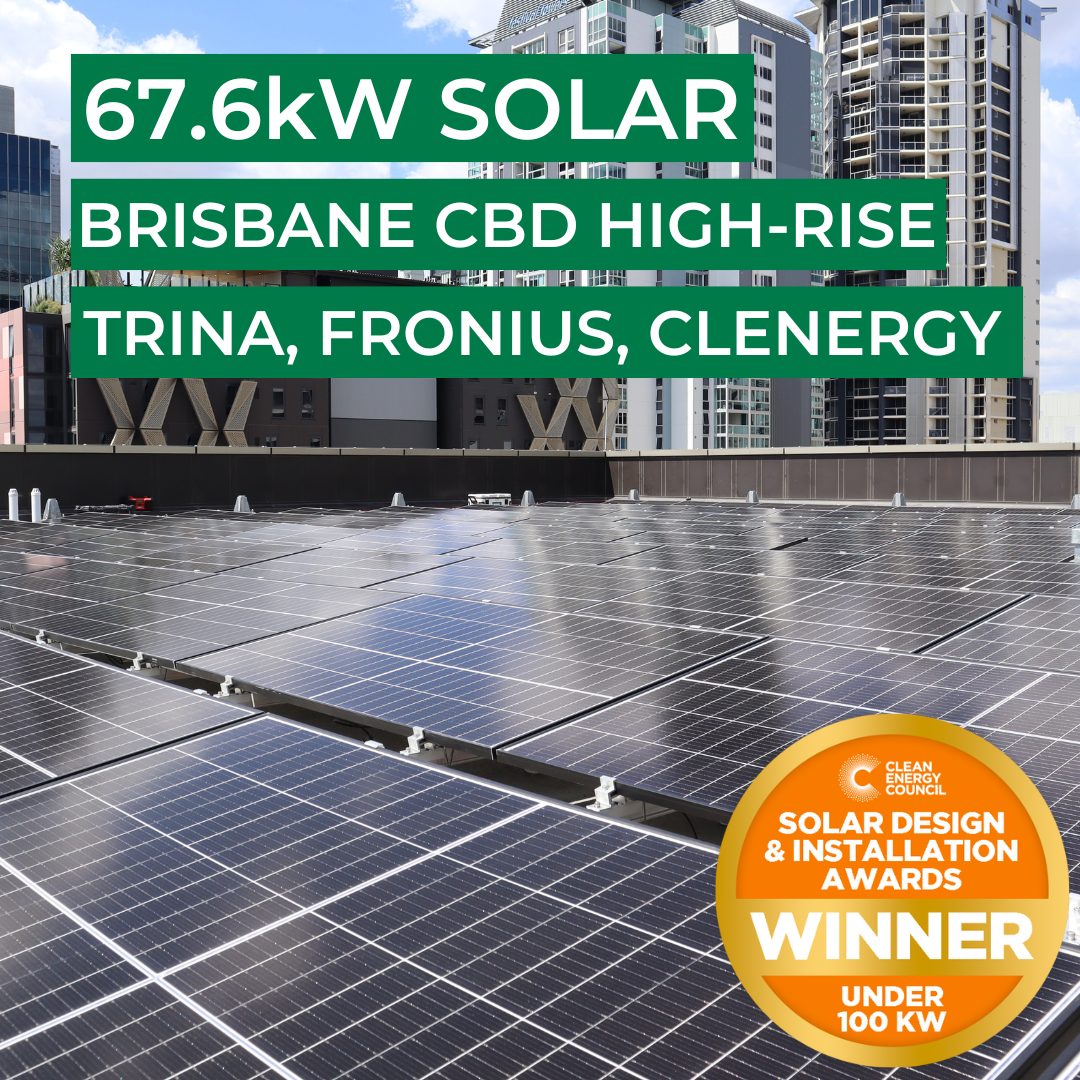
CASE STUDY
ATO Headquarters
The goal of this project was to install a highly efficient solar system that maximised the limited roof space to reduce carbon footprint and save on electricity costs.
Example electricity bill
How to save money on this electricity bill
1. Offset daytime usage with a solar energy system
Businesses have much more limited options in terms of changing their energy consumption behaviours, so the more effective solution is to install a solar energy system to offset as much daytime energy usage as possible.
Read more: These iconic Aussie businesses are switching to solar, and are now saving $18k a year on bills
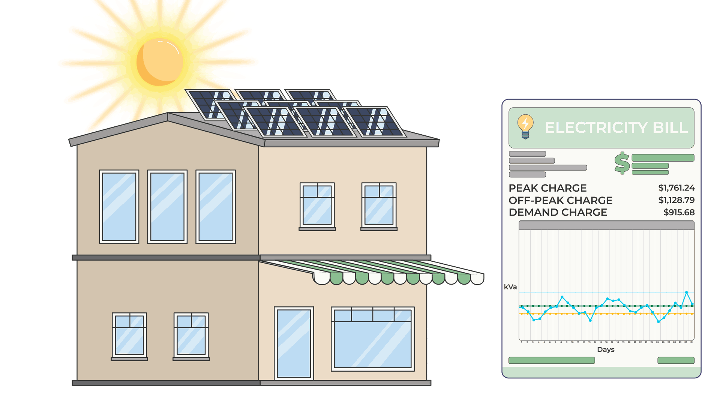
For a business that operates during peak periods, the payback period and return on investment of a solar energy system would be phenomenal. Solar will directly reduce the kWh charges on the electricity bill, reducing the overall cost of the peak rate, demand rate, and even the off-peak rate if the business continues to operate over the weekend.
Read more: What's the difference between kW and kWh?
2. Reduce costs even further with a solar battery
We have noticed in the past couple of years that more and more Queensland businesses are adopting solar batteries to further reduce their electricity costs and also provide backup protection.
Solar batteries will store excess solar energy generated during the day to be used overnight, during cloudy days, or power outages. For businesses that continue to use a lot of energy during off-peak periods, solar batteries can really reduce those kWh charges and save on costs.
Read more: Will my solar still work during a power outage?
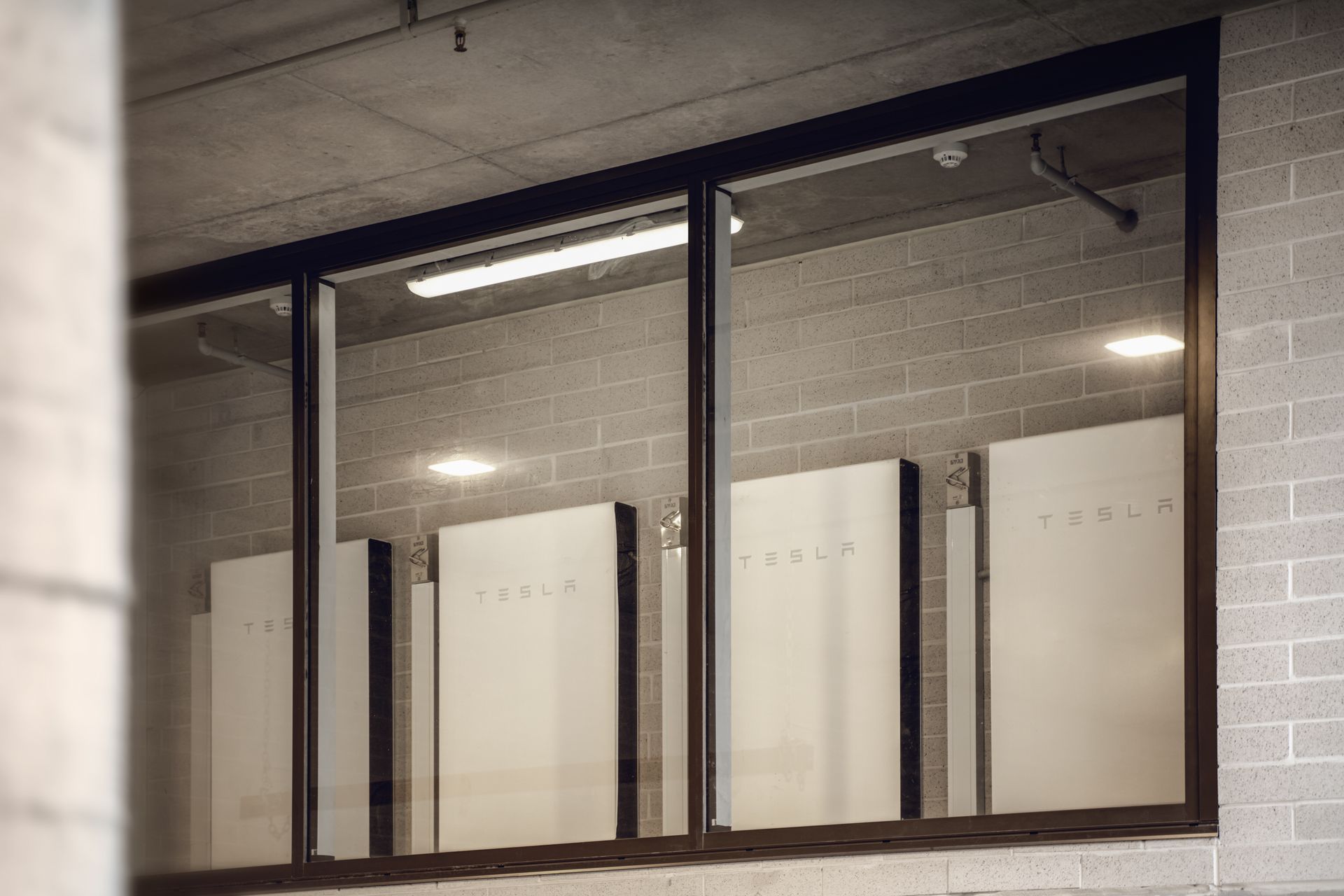
The demand charge can also be reduced with the addition of a solar battery - instead of drawing power from the grid during high electricity use periods, you can instead draw power from the battery to support that usage.
Depending on the type of business you operate, a battery can also be valuable in ensuring you don't lose power during a grid power outage. For example, we installed a solar battery on a medical centre - they were concerned that if they experienced a power outage, their vaccine fridges would be impacted and their inventory would be compromised. A solar battery was a fantastic way to ensure that their fridges will remain switched on even during a blackout.
Read more: Best solar batteries on offer in 2024
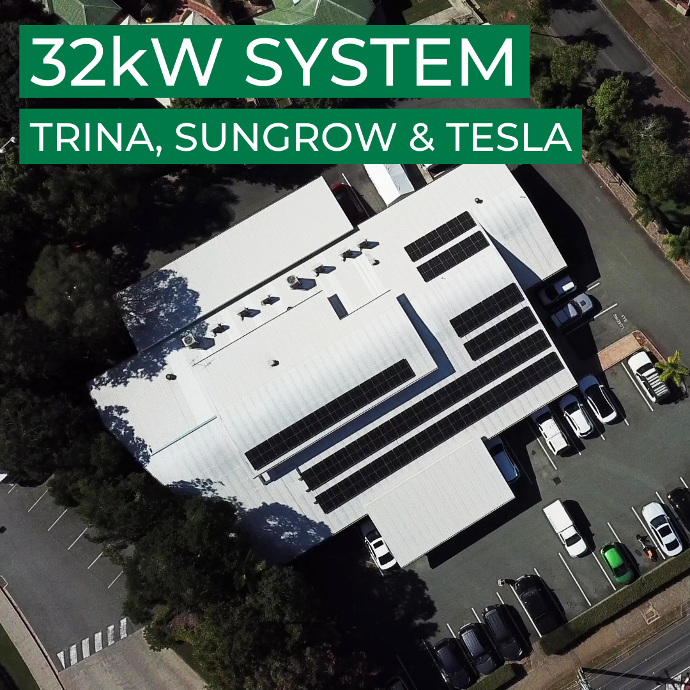
CASE STUDY
Medical Centre
The combination of the solar system with the Tesla Powerwall battery storage provides the necessary continuous backup solution that Bray Park Medical Centre requires.
Springers Solar | Queensland's Most Experienced Solar Installer
Springers Solar provides quality components with proven performance, backed by industry-leading warranties, and dedicated after-sales support. Thousands of satisfied customers over more than 21 years of operation make Springers Solar one of the most established and experienced solar companies in Australia.
Springers Solar has received multiple awards for design and installation and is a certified/preferred installer for a large range of solar panel, inverter, and solar battery manufacturers, including Tesla, REC, and SolarEdge.
Our dedicated in-house team of electrical engineers, project managers, solar PV designers, solar installers and electricians work closely with you before, during, and long after your project is completed. Springers Solar offers an industry-leading 10-year workmanship warranty which is a testament to our qualified staff and offers you outstanding value and peace of mind.
Contact us about anything related to our services using the form below.
We'll get back to you as soon as possible.
- Springers Solar
- 704 Gympie Road
Lawnton QLD 4501
Australia - 07 3889 8898
- sales@springers.com.au
Electricity Bill Tariffs Explained: Commercial Demand